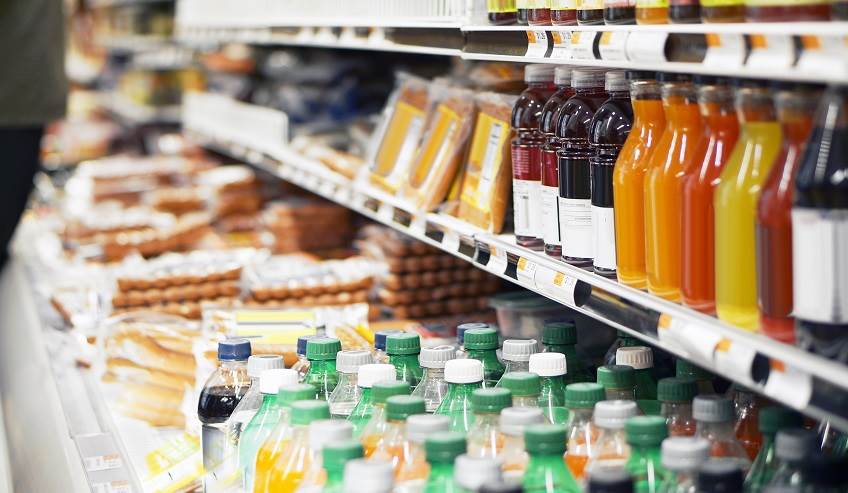Global Reach, Local Expertise
H.B. Fuller, has a team of dedicated experts around the world who understand local food contact legislation and collaborate to gain a global perspective. Below is a summary of some of the key food contact safety legislation around the world.
Advice or questions?

Jelle van der Aa | Expert packaging adhesives
Certified European Adhesive Specialist (EAS)
Phone number: 0622857215
E-mail address: jellevanderaa@maiburg.nl
The European Union
Food contact legislation in the European Union comprises a general Framework Regulation covering all materials, some specific measures for certain food contact material groups and a raft of Member State national legislation.Framework Regulation (EC) No. 1935/2004
“Regulation (EC) No. 1935/2004 of the European Parliament and of the Council of 27 October 2004 on materials and articles intended to come into contact with food.”
This Framework Regulation aims to ensure that “any material or article intended to come into contact directly or indirectly with food must be sufficiently inert to preclude substances from being transferred to food in quantities large enough to endanger human health or to bring about an unacceptable change in the composition of the food or a deterioration in its organoleptic properties.”
Regulation (EC) No. 1935/2004 - Original Document
Good Manufacturing Practice (GMP)
“Commission Regulation (EC) No 2023/2006 of 22 December 2006 on good manufacturing practice for materials and articles intended to come into contact with food” This regulation covers topics, such as conformance to good manufacturing practice, quality assurance and control systems, and documentation.
Commission Regulation (EC) No. 2023/2006 - Original Document
Specific European Measures
In addition to the Framework Regulation, certain food contact material groups are covered by specific European harmonized regulations. These include plastics, ceramics and regenerated cellulose. The Plastics Regulation ((EC) 10/2011) is the most important with regard to adhesives.
The Plastics Regulation
“Commission Regulation (EU) No. 10/2011 of 14 January 2011 on plastic materials and articles intended to come into contact with food.”
All food contact materials covered by a specific measure in Europe, such as the Plastics Regulation, need to be accompanied by a written Declaration of Compliance (DoC) at all stages in the supply chain, excluding retail. The DoC states that the material complies with the relevant regulation. In addition, supporting documentation and traceability through labeling or other documentation is required. All operators should be able to identify the previous and following step in the supply chain.
However, suppliers of non-plastic materials such as adhesives, inks and coatings do not have to deliver a DoC unless required by national legislation since there is no harmonized requirement at EU level.
Legal Text of the Regulation
Guidance for the food and beverage supply chain
FEICA (The Association of the European Adhesive and Sealant Industry), with support from its member companies including H.B. Fuller, has produced a range of guidance documents and position papers on adhesives in food contact applications. You can find the relevant documents here.
Member States
For many materials such as paper and board, inks, coatings, rubbers, and other items, no harmonized European regulation is in place. However, in these circumstances member states may adopt national regulations. Some of these regulations affect adhesives production and distribution:Germany
Germany’s BfR (Bundesinstitut für Risikobewertung - Federal Institute for Risk Assessment) has published several recommendations that are applicable to adhesive products. These are not legally binding; however they are widely recognized and applied in the market.
Recommendation XXVIII concerns “Cross-Linked Polyurethanes as Adhesive Layers for Food Packaging Materials”. It includes a positive list of materials approved for use in the layer/ polyurethane adhesive combination (flexible packaging).
Text of the Recommendation
Recommendation XIV covers “Polymer Dispersions” for coating commodities intended to come into contact with foods. Beside the described polymers and functional additives, it also includes a list of allowed biocides.
Text of the Recommendation
Recommendation XXV concerns “Hard Paraffins, Microcrystalline Waxes and Mixtures of these with Waxes, Resins and Plastics” and can be applied for specific applications as laminating waxes or heat seal hot melt adhesives.
Text of the Recommendation
Spain
Spain’s Royal Decree 847/2011 regulates non-harmonized polymeric materials and is applicable to adhesives. It establishes a positive list of substances allowed for the manufacture of polymeric materials intended to come into contact with food. It also sets out maximum allowable specific migration limits (SMLs) and overall migration limits (OMLs).
Text of the Decree (in Spanish)
Italy
Italy’s Decree of the Minister for Health of 21 March 1973 covers “Hygiene rules for packaging, containers and utensils intended to come into contact with foodstuffs or personal use products”. It also includes positive lists of authorized substances and materials. In addition, it prescribes maximum allowable specific migration limits (SMLs) and overall migration limits (OMLs).
Text of the Decree (in Italian)
The Netherlands
The Dutch Commodities Act Regulation on Packaging and Consumer Articles Coming into Contact with Foodstuffs has defined a list of authorized substances, restriction limits and other requirements for 12 types of food contact material and articles: plastics, paper and cardboards, rubber, metals, glass and glass ceramics, ceramics and enamels, textiles, regenerated cellulose films, wood and corks, coatings, colorants and pigments, and epoxy polymers. The chapters covering paper and carboards, wood and cork, and coatings contain positive lists of adhesives.
All food contact materials falling under this regulation shall be subject to migration tests. Although there might be no official test methods established yet, products or materials need to checked for migration.
Text of the Regulation
The United States
The Federal Food, Drug and Cosmetic Act (FD&C Act) from 1958 is the basic regulation governing food contact materials, which are regulated in the Code of Federal Regulations (C.F.R.) under Title 21, Parts 174-186. They may also fall under further specific regulations depending on their use. Clearance for food contact materials is required for those that are considered additives, also referred to as indirect additives, which are those that can reasonably be expected to migrate into the foodstuff.All materials also must meet the purity standard of 21 C.F.R. §174.5, which is the FDA’s good manufacturing practices regulation for food contact materials.
The parts in Title 21 list specific conditions that must be met by the substances and may also include positive lists of substances.
The following parts of Title 21 Code of Federal Regulations may be relevant to adhesives:
21 C.F.R. §175.105: Adhesives.
21 C.F.R. §175.125: Pressure-sensitive adhesives.
21 C.F.R. §175.300: Resinous and polymeric coatings.
21 C.F.R. §176.170: Components of paper and paperboard in contact with aqueous and fatty foods.
21 C.F.R. §176.180: Components of paper and paperboard in contact with dry food.
21 C.F.R. §177.1390: Laminate structures for use at temperatures of 250°F (121°C) and above.
21 C.F.R. §177.1395: Laminate structures for use at temperatures between 120 °F (49°C) and 250°F (121°C).
For the specific texts, click here.
Adhesives cleared under Part 175.105 must be either:
- Separated from food by a functional barrier, or
- Used so that the quantity of adhesive contacting food does not exceed the limits of good manufacturing practice (GMP).
Substances for use in food contact materials may be cleared from authorization for various reasons:
- One such exemption occurs if the substance was used before 1958. Such substances were grandfathered into the regulation, and their status cannot be revoked by the FDA.
- Another option is if a substance is “generally recognized as safe” (GRAS). GRAS substances may be approved by the FDA. GRAS substances may also be exempted not only from authorization but also from notification. This is the case if a substance was a common food ingredient used before 1958.
China
China Food Safety Law specifies the requirements about food contact related materials, such as glass, resin, paper and paper board, plastic, metal, and rubber. It covers four areas:- General standards: GB 4806.1-2016 contains general safety requirements of food contact materials. GB 9685-2016 regulates additives in food contact materials and articles.
- Product standards for food contact material regulation, GB 4806.5-GB4806.11. It specifies the requirement for glass, plastic resin, plastic, paper and paper board, metal, coatings and rubber separately. In draft standard: bamboo and wood materials and articles, composite materials and articles, adhesives, ink, regenerated cellulose, starch based plastics.
- Standards for testing methods for individual substances and for migration testing.
- Good Manufacturing Process Standards, GB31603-2015.
China’s National Center for Food Safety Risk Assessment (CFSA) is working on a “Draft Adhesives Standard.” Based on the draft version issued in May 2019, it proposes to separate adhesives into two categories: for polymers, it is divided into direct and indirect food contact adhesives with separate positive lists for each category; for additives used in adhesives, it still refers to the GB 9685-2016 standard.
Southern Common Market (MERCOSUR)
MERCOSUR is an economic and political bloc. Click here for a listing of MERCOSUR countries.The food contact materials legislation for MERCOSUR has two main thrusts:
- Pre-market approval: This is similar to pre-market approval practices in the EU. There are positive lists for harmonized materials and specific migration limits (SMLs) and overall migration limits (OMLs) are prescribed.
- Registration: For the final packaging only, with the exception of Brazil.
MERCOSUR has specific regulations for the following materials: Plastics, colorants, adhesives, elastomers, metals, glass and ceramics, paper and paperboard, and regenerated cellulose. GMC Resolution No. 27/99 on adhesives stipulates that substances permitted in the manufacture of adhesives must be listed in:
- Positive list of polymers and resins for containers and plastic equipment in contact with foods.
- Positive list of additives for plastic materials intended for the preparation of containers and equipment in contact with foods.
- Positive list for containers and cellulose equipment in contact with foods.
- Positive list for containers and elastomeric equipment in contact with foods.
- The amount of adhesive in contact with food at joints and edges of laminates should be minimal and at GMP level.
- Necessary migration tests should be performed on the final packaging or article to come in contact with food to verify compliance with GMC Res. No. 3/92.
- Product label is required to state: “Adhesive for [material (s) to which it is intended for use] for the manufacture of articles in contact with food.”
